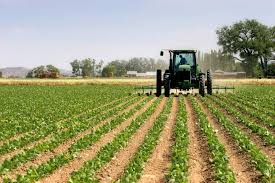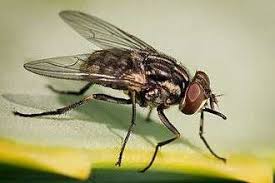Semi-intensive System of Livestock Production
Semi-intensive system are commonly used by small scale producers and are characterized by having one or more pens in which the birds can forage on natural vegetation and insects to supplement the feed supplied. It is desirable to provide at least two runs for alternating use to avoid build up of disease and parasites.
As may be observed in the foregoing, varieties of subsystems have been adopted to take advantage of low-cost of the extensive system and the high productivity of the intensive as circumstances may dictate under different operation environment.
Many times, such adapted system takes the semblance of both the intensive and extensive system, forming a hybrid system between the two.
Most improvement efforts on the traditional extensive system deliberately avoid high cost of the intensive system to adapt to semi-intensive system.
Under such intensive system a limited number of stock, specially breeding female animal is confined only at night in an enclosure in which there is a shelter large enough for all animal.
Grazing with the animal is done daily using a paid laborer in addition to concentrate feed, mineral salt block and clean water herd or flock has access to cultivate leguminous fodder and vaccination against common diseases of internal and external infection. Breeding is highly controlled.
The Semi-intensive system is amenable to integration with other farming systems and may take different form in terms of its operation under different production conditions.
A few of subsystem management practices under semi-intensive system are listed as follow:
. Shepherded grazing
. Grazing in fenced paddock
. Scavenging
Read Also: Intensive System of Livestock Production
It is desirable to provide at least two runs for alternating use to avoid build up of disease and parasites. Each run should allow at least 10 to 15m² per hen and be fenced, but a free-range allowing 40 to 80m² per hen will be required where the hens are expected to obtain a substantial part of their diet by foraging.
A small, simple house, which allows 0.3 to 0.4m² per bird, and which has a thatched roof a littered earth floor and slatted or chicken wire walls on at least three side will provide protection from inclement weather, from predators at night and offer shade in the daytime.
The shelter should be large enough to enter to collect eggs and be equipped with nextboxes, feeders, drinkers and perches. For convenience the house should be situated so that access to each of the runs can be provided with small outlet doors or ‘popholes’.
This Semi–intensive system is low in cost, but growth of the birds and egg production are likely to be less than with systems offering closer confinement and better feed. Losses may be encountered by birds of prey and from failure to find eggs laid in bushy areas. The poultry run requires a considerable amount of fencing.
Related: 50 Business Ideas for Aspiring Entrepreneurs on Agriculture
This system is characterized by:
Availability of more land for livestock and crop production and moderate population pressure.
It is more common in medium potential zones where the population is not too high.
It combines grazing in open pastures (extensive) and feeding of forages in confinement (intensive) i.e. it combines forage growing especially improved pastures and grazing together with cut and carry system. Daytime, there is normal grazing while cut and carry fodder is given to animals at night.
The production profile is characterized by high to moderate input (especially capital) and moderate output.
Animal species kept include but not limited to:
Dairy cattle – where grazing system is practiced and this can be divided into open grazing, semi-zero grazing and some limited zero- grazing near urban centres.
Beef/sheep/goats – Open grazing and browsing particularly in ranches and commercial land areas. Improved Boran cattle and crosses are kept.
Poultry – Kept on free ranging system although some intensive system may be found in schools and around trading centres.
Read Also: Some Inherited Defect to be Avoided in Livestock Breeding









